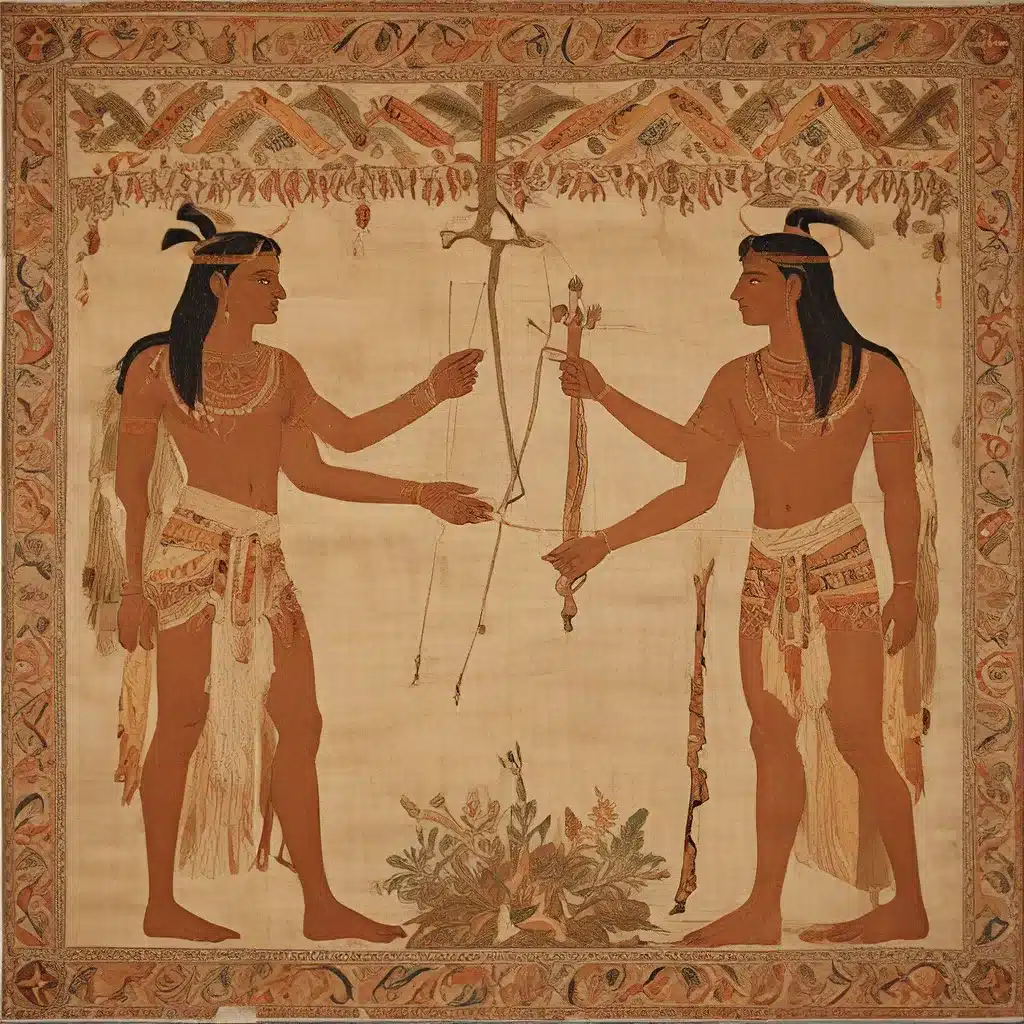
In the captivating realm of ancient civilizations, the story of cultural exchanges and interactions is woven like a rich tapestry, revealing the intricate connections that have shaped the course of human history. From the Silk Road that united the East and West to the archaeological discoveries that shed light on the mysteries of the past, this article delves into the fascinating narratives that unravel the complexities of ancient societies and their enduring legacies.
The Silk Road: A Bridge Between Civilizations
The Silk Road, a vast network of interconnected trade routes, stands as a testament to the remarkable human capacity for exchange, cooperation, and progress. This ancient system of commerce and cultural diffusion has its roots in the Han Dynasty of China, where the production of exquisite silk became a highly sought-after luxury commodity among the Mediterranean, Central Asian, and Middle Eastern civilizations.
As trade flourished along the Silk Road, it became much more than a mere conduit for goods. It evolved into a bridge that united the East and the West, facilitating the transmission of knowledge, ideas, and beliefs across vast distances and diverse terrains. Buddhist monks from India traveled to China, spreading their teachings and enriching the philosophical landscape, while Greek, Persian, and Indian influences also made their mark on the intellectual and cultural fabric of China.
The exchange of technological marvels was another hallmark of the Silk Road. The Chinese art of papermaking, for instance, traveled westward, revolutionizing the way knowledge was recorded and disseminated. The discovery of paper in Europe ignited a Renaissance in learning, accelerating human progress and heralding a new era of interconnectedness. Similarly, the compass, a Chinese invention, found its way to the West, transforming navigation and exploration.
Diplomacy, Conflict, and Environmental Impact
The Silk Road was not without its challenges. As trade flourished, so did diplomatic relations between the empires and kingdoms that dotted its routes. Rome, Parthia, and China engaged in intricate negotiations, exchanging gifts, signing treaties, and fostering cooperation. However, the Silk Road also witnessed its fair share of conflicts, as the Han Dynasty’s military expeditions against nomadic tribes disrupted the fragile balance of peace.
The Silk Road’s environmental impact was also significant. As goods traversed continents, they carried with them flora, fauna, and diseases, transforming regional ecosystems and dietary patterns. The introduction of crops like rice and oranges altered local diets, while the arrival of new animal species transformed the natural landscapes. Yet, the Silk Road societies also demonstrated a remarkable capacity for environmental stewardship, developing sustainable practices such as oasis agriculture and irrigation systems to thrive in the arid lands they traversed.
Preserving the Legacy of the Silk Road
While the physical routes of the Silk Road have faded with time, its legacy lives on in the cultural heritage and identity of the regions it once connected. The UNESCO has recognized key sites along the Silk Road as World Heritage, ensuring the preservation of this rich history for future generations.
In recent times, the revival of interest in the Silk Road has been evident in initiatives such as the Belt and Road Initiative, which seeks to revive and expand the Silk Road’s ethos of connectivity and cooperation in the contemporary world. As the global community becomes increasingly interconnected, the spirit of the Silk Road continues to inspire us to seek common ground, embrace diversity, and forge a future of mutual understanding.
Uncovering Ancient Civilizations through Archaeological Discoveries
Alongside the enduring legacy of the Silk Road, the field of archaeology has been instrumental in unveiling the mysteries of ancient civilizations, shedding light on their cultural exchanges and interactions. From the unearthing of long-lost cities to the analysis of artifacts and inscriptions, archaeological discoveries have captivated the minds of historians, anthropologists, and the general public alike.
One such remarkable discovery is the excavation of the ancient city of Qin, which has provided unprecedented insights into the cultural and technological advancements of the Qin Dynasty in China. The terracotta army, the intricate system of underground canals, and the advanced metallurgy practices found at the site have challenged our understanding of this pivotal era in Chinese history.
Similarly, the discovery of the Rosetta Stone has been instrumental in deciphering the hieroglyphic writings of ancient Egyptian civilization, unlocking a treasure trove of knowledge about their cultural, religious, and political systems. These archaeological breakthroughs have not only expanded our historical knowledge but have also sparked new theories and debates among scholars, further enriching our understanding of the past.
Weaving the Threads of Ancient Civilizations
As we delve deeper into the tapestry of ancient cultural exchanges and interactions, we are reminded of the enduring power of human ingenuity, resilience, and the desire to connect with one another. From the Silk Road that united distant civilizations to the archaeological discoveries that unravel the mysteries of the past, the stories of ancient societies continue to captivate and inspire us.
By understanding the complexities and interconnections that shaped the ancient world, we can gain valuable insights into the present and envision a future where the spirit of the Silk Road – cooperation, exchange, and mutual understanding – continues to guide us. The Lost Kingdoms website invites you to embark on this fascinating journey, where the threads of ancient civilizations come together to reveal the rich tapestry of human history.


